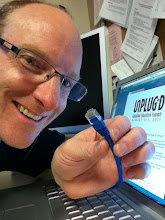At the 1968 Summer Olympic Games in Mexico City, the world of competitive high jump changed forever. That was the year that Dick Fosbury won the Olympic gold medal, while going over the bar head first, and backwards. Almost overnight, the 'Fosbury Flop' became the 'new normal'.
What will become the new normal for Education?
In an interview from the Atlanta Games, Fosbury recounts the gradual evolution of the 'flop':
"The interesting thing was that the technique developed in competition and was a reaction to my trying to get over the bar. I never thought about how to change it, and I’m sure my coach was going crazy because it kept evolving. I believe that the flop was a NATURAL style and I was just the first to find it. I can say that because the Canadian jumper, Debbie Brill was a few years younger than I was and also developed the same technique, only a few years after me (and without ever having seen me)."
As an example of coincidental innovation, Canadian, Debbie Brill, became the first North American female to clear 6 feet with the "Brill Bend".
What can we learn from Fosbury and Brill?
Many factors should encourage teachers to 'jump higher':
- A variety of Web tools allow us to share our learning experiments;
- Online mentors abound for teachers ready to explore ICT;
- Modern resources are becoming more accessible, and less expensive;
- Curriculum expectations require students to create;
- Global connections are but a few clicks away.
In the late 60's, foam landing pits gradually replaced piles of sand and sawdust, reducing the risk for modern era high jumpers. Maybe we just need a softer landing spot, one that invites teachers to model creativity, risk-taking... and learning?
Wednesday, January 13, 2010
blog comments powered by Disqus



